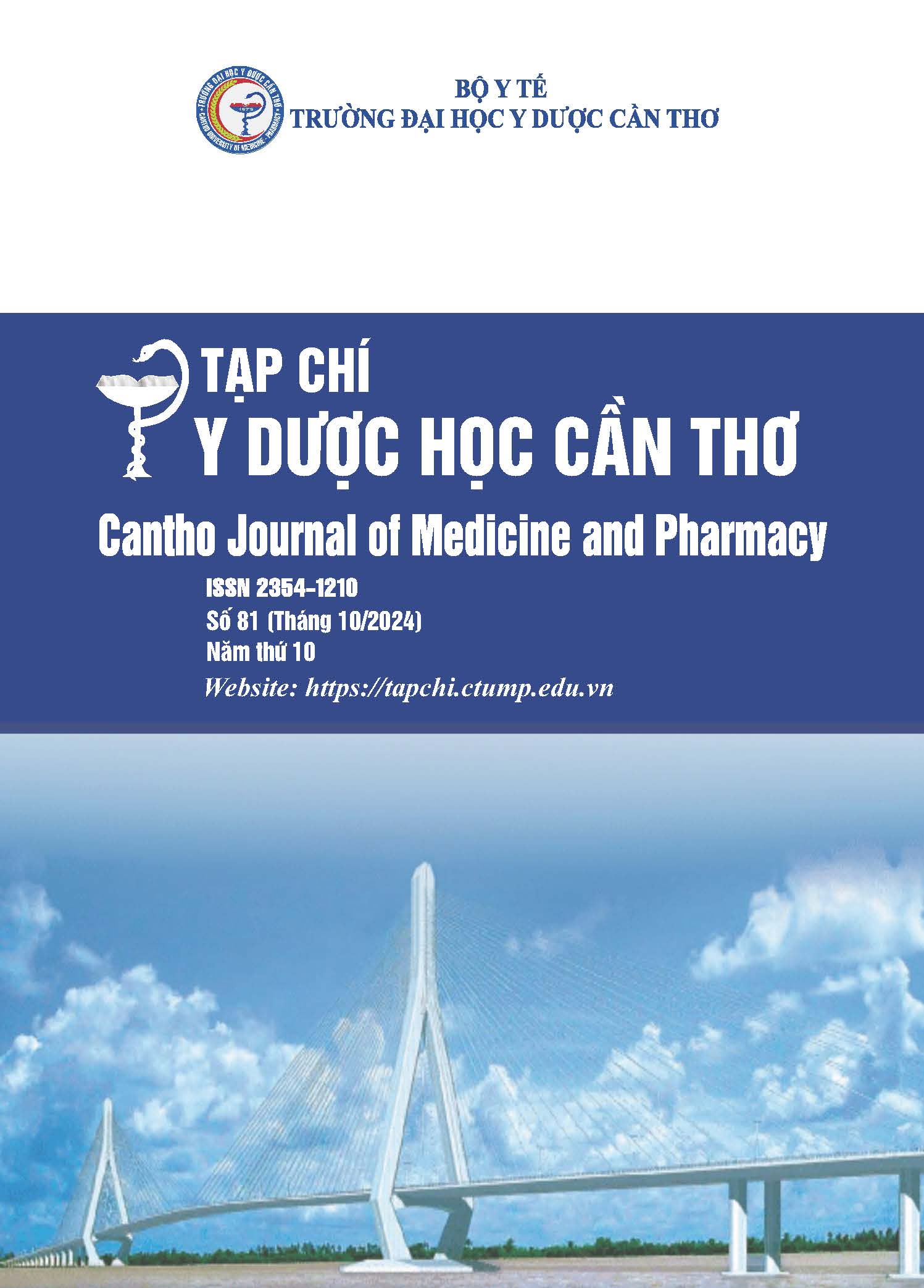PRELIMINARY SURVEY OF BOTTOMICAL CHARACTERISTICS AND CHEMICAL COMPOSITION OF (BOESENBERGIA PANDURATA (ROXB.) SCHLTR.) COLLECTED IN SOC TRANG PROVINCE
Main Article Content
Abstract
Background: The plant (Boesenbergia pandurata (Roxb.) Schltr.) has been used as a traditional spice in the cuisine of many countries. In addition, it is also used in traditional medicine to treat diseases such as diarrhea, dysentery, stomach pain, dermatitis, dry cough, fibroids, leukorrhea, etc. Research shows that the Vermicelli wormwood plant has the main chemical ingredients include flavonoids and essential oils. The plant has many different pharmacological effects such as antioxidant, antibacterial, anti-inflammatory, antifungal, anti-periodontitis, antiviral, anti-tumor, and anti-aging activities. The plant is widely grown in the western provinces of Vietnam. This is a medicinal herb with a lot of potential. However, its morphological characteristics are easily confused with some plants in the Ginger family. Objectives: To analyze of botanical characteristics and preliminary chemical composition in the vermicelli wormwood plant collected in Soc Trang province. Materials and methods: The plants collected in Soc Trang province were analyzed, characterized by morphology, anatomy, medicinal powder and preliminary chemical composition using the improved Ciuley method. Results: Anatomical characteristics, medicinal powder characteristics and preliminary chemical composition of the roots. Conclusion: The results of botanical characteristics help support the accurate identification of medicinal herbs when used and the orientation of compound groups in the roots.
Article Details
Keywords
Boesenbergia pandurata, medicinal powder, fingerroot
References
2. Võ Văn Chi. Từ điển cây thuốc Việt Nam (Tập 1). Nhà xuất bản Y học. 2012. 243-244.
3. Nguyen Thi Thanh Mai, Nguyen Xuan Hai, Le Huu Tho, Do Van Nhat Truong, Dang Hoang Phu et al. A new flavanone derivative from the rhizomes of Boesenbergia pandurata. Natural product research. 2020. 36 (8), 1959-1965, doi: 10.1080/14786419.2020.1837822.
4. Ongwisespaiboon O., Wannee Jiraungkoorskul W. Fingerroot, Boesenbergia rotunda and its Aphrodisiac Activity. Pharmacognosy Reviews. 2017. 11, 27-30, doi: 10.4103/phrev.phrev_50_16.
5. Handayani N., Abdul Gofur A. and Siti Imroatul Maslikah S. I. The Potency of Finger Root (Kaempferia pandurata ROXB) Rhizome Simplicia Decoction as Anti-fertility of Balb C Mice (Mus muscululus). AIP Conf. Proc. 2020. 040045 (2020), doi: org/10.1063/5.0002667.
6. Trương Thị Đẹp. Thực vật học. Nhà xuất bản Giáo dục. 2016.
7. Bộ môn Dược liệu. Giáo trình phương pháp nghiên cứu dược liệu. Khoa Dược-Trường Đại học Y Dược Thành Phố Hồ Chí Minh. 2016.
8. Jantan I., Basni I., Ahmad A. S., Ali N. A. M., Ahmad A. R.et al. Constituents of the rhizome oils of Boesenbergia pandurata (Roxb.) Schlecht from Malaysia, Indonesia and Thailand. Flavour and Fragrance Journal. 2001. 16(2), 110-112, doi: abs/10.1002/ffj.956.


